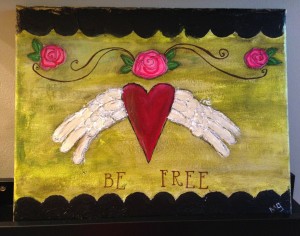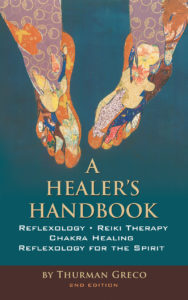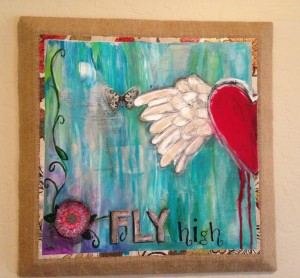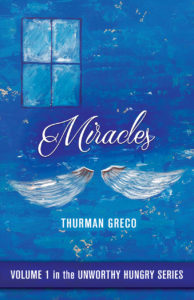Anxiety Affects Many People Both Physically and Spiritually
ANXIETY AFFECTS CHILDREN, ADOLESCENTS, AND ADULTS. Anxiety is the word used to describe feelings ranging from mild unease to intense fear.
ANXIETY CREATES A VARIETY OF SYMPTOMS BOTH PHYSICAL AND SPIRITUAL. Common physical symptoms include heart palpitations, stabbing pains, shortness of breath, headaches, back pains, and muscle spasms. Excessive sweating, dizziness, digestive problems also are included in this lineup.
SPIRITUAL SYMPTOMS INCLUDE FEELINGS OF INSECURITY, FEAR, HELPLESSNESS. Spiritual issues also include preoccupation with the future and past. A person’s life has a flow which anxiety can get in the way of.
A person suffering with anxiety needs, first, to learn to try to overcome the fear which plagues anxiety sufferers. Getting proper medical care as well as nutritional advice along with reflexology can help.
Because anxiety has a strong physical aspect to it, it’s important for the sufferer to be aware of the proper nutritional needs in addition to the needed medical care. This involves eating the proper foods, recognizing what food allergies exist, and identifying the needed vitamins and minerals necessary for a recovery.
MANY PEOPLE CAN LESSEN THEIR SYMPTOMS BY ELIMINATING CAFFEINE, SUGAR, AND ALCOHOL FROM THE DIET.
I always recommend calling Liz at Village Vitality (Woodstock Apothecary) for an analysis of vitamins and minerals needed. Her number is 845-679-0790.
When offering reflexology sessions to a person suffering with anxiety attacks, the first step is to work the entire endocrine system to balance the spiritual aspects of the issues.
Work the nervous system.
Work the digestive system and focus on the pancreas reflexes.
Work the endocrine system and focus on the pituitary gland reflexes, the thyroid and parathyroid reflexes.
Finish the session by working the liver and solar plexus.
Thank you for reading this reflexology blog/book.
Please refer this article to your preferred social media network.
Please send a comment.
Peace and food for all.
Thuran Greco
The First Step in a Reflexology Session – Part 3
This is the last part of the section on greeting and assessing your client partner. In the previous post, we discussed how the different colors on the feet reflect spiritual issues in a person’s life.
As you study this blogged book further, you’ll learn that each of the things noted in the past two posts has a meaning for you not only for what the observation is but where it is found.
Notice where the feet point when your client partner is on the table. Do the feet point up? Does one foot point out to the side? Do they both point out to the side? Do they both point in the same direction? Do they point inward? Are they crossed at the ankles?
Generally, when a person walks into your healing space with the toes pointed out or inward, s/he has back problems.
On the table, if the toes are pointing outward, the person is pretty open. Some people point their toes inward, and some even cross their feet. If this is the case, the person probably has strong protection issues.
If a person comes to your table with feet that are unpleasant to look at and smell, clean them off with a warm, wet wash cloth. Feel free to spritz them with a cleansing spray.
If a person comes to your table with sweaty, smelly feet, you also have the option of offering hand or ear reflexology. Or, you can even wear gloves. Whatever you do, please remember that a person with smelly, sweaty feet is suffering terribly and is probably in a fight or flight situation of some kind because sweating feet are generally caused by the nervous system working overtime. The operative words here are anxiety, anger, nervousness, etc.
Don’t be afraid to address this situation with your client. The person needs to get a diagnosis from a primary healthcare provider. Smelly, sweaty feet often need medical attention that you as a reflexologist cannot provide. Fungus on the feet needs to be treated by a podiatrist or other professional.
However, don’t worry about a person coming to your table with unpleasant feet. For the most part, this just doesn’t happen. Most people arrive with gorgeous feet. Often, when a person has received a gift certificate, s/he will go to the nail salon before coming for the Reflexology for the Spirit session.
In our next post, we’ll discuss important information you need to know as a Reflexology for the Spirit practitioner or as a regular reflexologist, for that matter.
I hope you found these last three posts helpful. Please leave comments below if you have any questions, etc.
Thanks again for joining me on this journey.
Peace and food for all
Thurman Greco
Woodstock
Sweaty Feet can be very “trying” for a Reflexologist.
For starters, the natural inclination is to just not touch the feet. Don’t worry. Use an antibacterial spray on the feet to clean them off. Wear gloves if you are worried that you’re going to “catch” something.
Remember this: A person with sweaty feet is a person whose Adrenal glands are in serious passing gear.
There are several things your client partner can do. We can’t prescribe these things but it’s nice to know what they are: soak the feet in salt water to change the bacteria, rub the feet with alcohol and let it dry, change shoes and socks often, and spritz with cleansing spray whenever possible.
Suggest a visit to a podiatrist to make certain there are no infections, etc. Whatever the condition, you still have a person with serious spiritual conditions needing your attention regularly.
SYSTEMS TO WORK: adrenals, nervous system, immune system, urinary system, digestive system with emphasis on the liver and the solar plexus.
ESSENTIAL OILS: bergamot, Roman chamomile, frankincense, lavender, marjoram, wintergreen, myrrh, rosemary, sandalwood, thyme, ylang ylang, and spruce.
Thanks again for reading the blog. Our next post will focus on Swollen Ankles and Feet.
As always, this post comes to you from my healing space in Woodstock, NY.
Peace and food for all.
Thurman Greco












